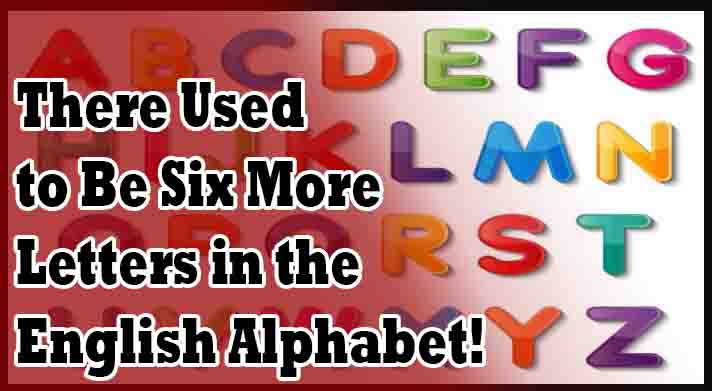When the first edition of the Oxford English Dictionary came out in 1928, it included a whopping 26 letters.
Here’s what happened to those six lost letters.
While it may seem strange, the English language used to have several more letters than it does now. That is because, it has only been around for a few hundred years, so there are not many words in the English language.
Here are six more slang words to help you say the word “oi!” like the pros. The last one might take a little longer to master, but with practice and perseverance, you’ll soon be able to say it without hesitation.

Linguistics experts say that modern streamlining and the mixing of the cultures of Northern Europe are to blame for the loss of their letters. “Some former letters had significance, as Eth and Ash are still used as part of the phonemic chart used for pronunciation,” says ESL professor Alix Hoechster, “but don’t expect to see them on your keyboard or use them in day-to-day life.” That’s because they’ve generally been phased out and replaced by letters that do double duty, either by already addressing the sounds in question or by making the desired sounds when combined with other standard, existing letters. To put the letters on your keyboard into alphabetical order, you must change them.
Anne Babson, an English instructor at Southeastern Louisiana University with a background in Late Medieval European languages, explains that the letters we no longer see gradually fell out of use as printing presses developed a type-setting system. “At first, ‘Eth’ and ‘Thorn’ were replaced with ‘Y’ in some typography and signage, so ‘Ye Olde English Shoppe’ would have been pronounced by contemporary readers as ‘the Old English Shop’ today.
The way the letter “t” is used in English, particularly in this sentence, indicates that it represents the sound “th. That’s why we have a frontispiece for the publication of Paradise Lost in the 1600s that looks like Paradise Lost.
If you’re wondering whether our current alphabet will keep shrinking, Babson suggests there’s no reason to worry about that anytime soon. “Standardized spelling makes it less likely for that to happen than when Middle English was turning into Modern English,” she says. “Most of our high school English teachers would roll over in their graves if ‘quick’ became permanently ‘quik.’ That said, it’s not impossible that we will simplify the orthography of many words the way the ‘drive thru’ has done.
Table of Contents
Eth (ð)
In its original form, the letter ‘eth’ was pronounced like the th sound in words like this.
Thorn (þ)
Thorn used to be pronounced with a th sound, but in a softer manner. Imagine using the th sound with a gentle roll behind your teeth, in a friendly, happy way. What’s the surprising history behind why the alphabet is in the order that it is?
Wynn (ƿ)
Ue was an early precursor to today’s uu, and it fell out of favor when printers and writers started smushing two trendy u letters together.
Yogh (ȝ)
We can thank the Scots for this letter, but we probably shouldn’t thank them for it having existed, however briefly. Think of the h sound in Loch Ness Monster, or the way you’d pronounce the h in “challah bread.” It wasn’t actually “z.
Ash (æ)
This letter is still used in modern Danish.[Clinico-morphological characteristics of malignant bronchial stenoses and their treatment by laser-beam thermo-coagulation]. If you’re interested in spending time with this antique, go straight to Denmark.
So, basically, the short a sound is like a short vowel sound, but it wasn’t pronounced with a long oo as a long a, like how we’d say “pat,” rather it
Ethel (œ)
Ethel was similar to Ash in that it was a strange hybrid, but was pronounced like the “oi” in “join.
